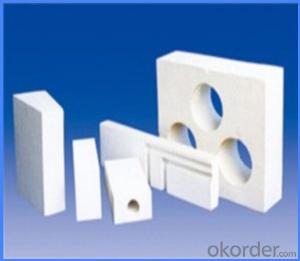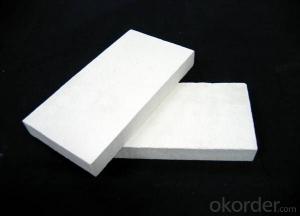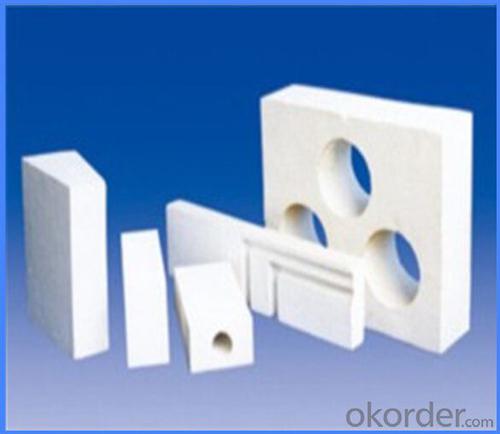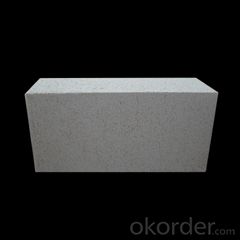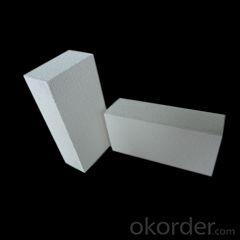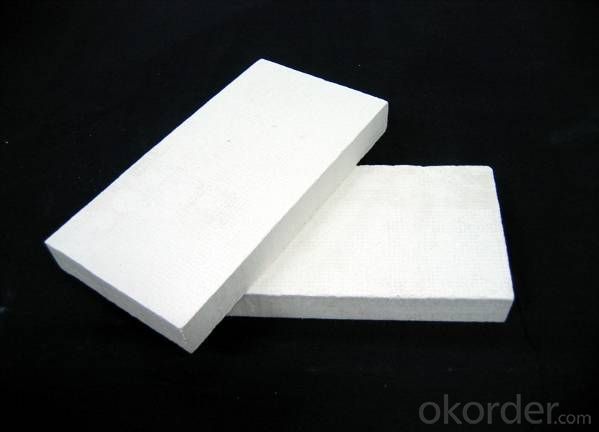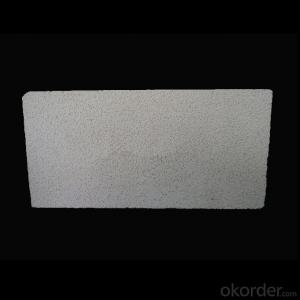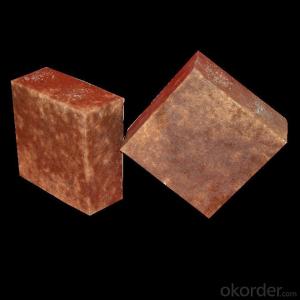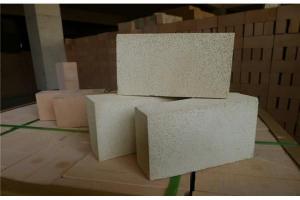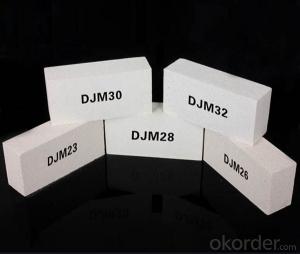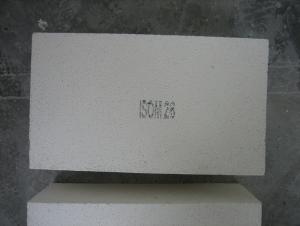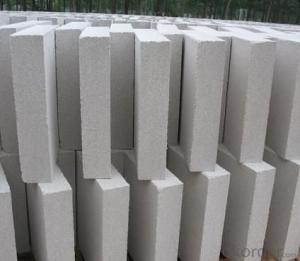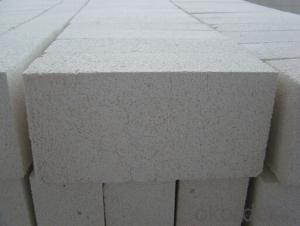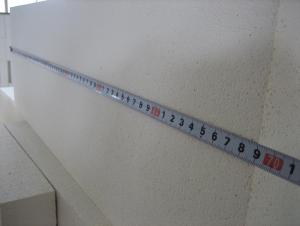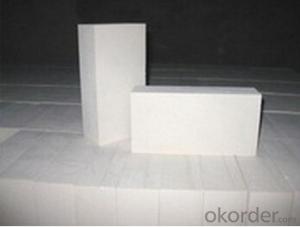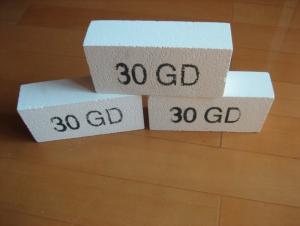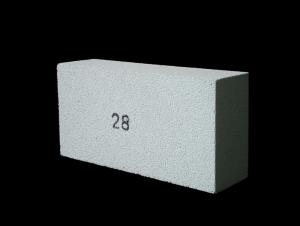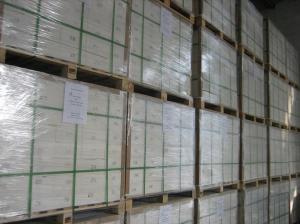Insulating Fire Brick - Refractory JM Mullite Insulation Brick JM-26
- Loading Port:
- Shanghai
- Payment Terms:
- TT OR LC
- Min Order Qty:
- 10 m.t.
- Supply Capability:
- 1000 m.t./month
OKorder Service Pledge
OKorder Financial Service
You Might Also Like
Refractory mullite insulating refractory brick JM 23
Okorder series heat insulation brick
Okorder series thermal insulation brick is an effective, energy saving, low carbon, environmental protection advanced, according to the ASTM standard manufacturing products. Okorder series products are best Li Ning and insulation in all types of industrial furnaces in the metallurgical field, aluminum, petrochemical, electric power and glass ceramic materials. They can be used as part of the working layer of thermal insulation or non - melting. Products have been widely used in the following furnace, achieved satisfactory results.
Application of heat preservation brick
Metallurgical Industry: blast furnace, hot blast furnace, heating furnace, etc..
Petrochemical Industry: ethylene cracking furnace, hydrogen production furnace, primary reformer, heating furnace, etc..
Ceramic industry: roller kiln, kiln, etc..
Glass industry: glass furnace regenerator, etc.
Carbon industry: carbon furnace, etc..
Aluminum electrolysis industry: aluminum reduction cell, etc.
Other industries: tunnel kiln, shuttle kiln, etc..
Advantages of heat insulation brick
Low thermal conductivity: more porosity will bring good thermal insulation effect, energy saving.
High crushing strength: high crushing strength, volume stability.
Low heat storage: small heat storage to absorb more heat, energy-saving effect is obvious.
Gao Chundu: iron, alkali metal impurity content is low.
The precise size: Brick size processing precision, special shape cutting and grinding, accelerate the brickwork.
Insulating brick picture
Common problem solutions
1. What products do you have?
We have all kinds of refractory bricks, refractory casting materials, mortar, cement, ceramic fiber products, etc..
Or you can browse our products to choose what you need.
2. How to control product quality?
With strict quality control system throughout the material selection and production process, we have the quality of refractory materials and ceramic fiber products to meet customer requirements.
From the selection of raw materials, the quality of our control to start. The quality certificate of the raw material is required, each batch of the products are to be tested in the use of the forward line. In the production process, the quality control by the workers, and then each piece of classification, and through the quality supervision and inspection.
3. Can you give me a brief introduction to the application of your product?
My company is mainly engaged in refractories in the steel, cement, glass, ceramics, petrochemical, electric power and other industries.
4. What information do you need if I need you?
In order to select the right products, we will provide us with information, such as the United States, technical data, order quantity, product application, etc..
If you have any questions, please contact us.
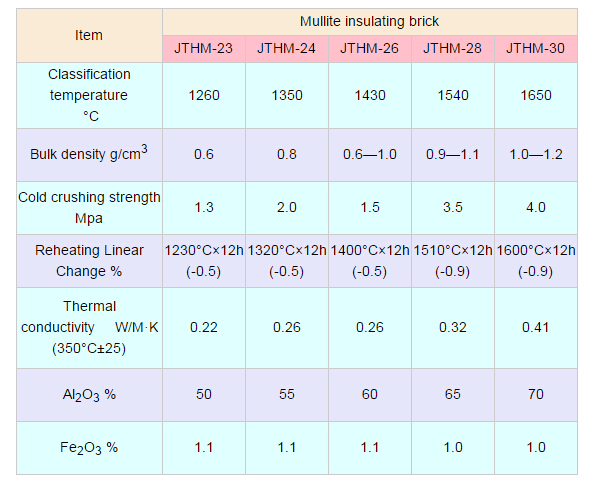
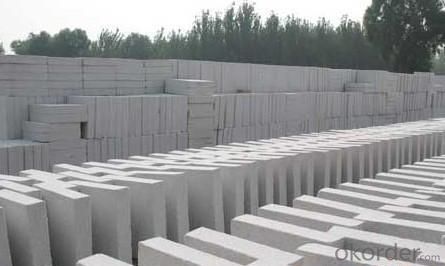
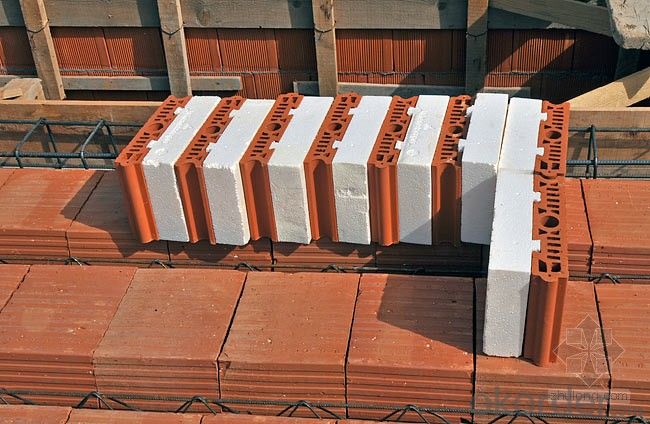

- Q: Are insulating fire bricks easy to cut or shape?
- Compared to other bricks, insulating fire bricks offer a relatively simple cutting and shaping process. This is mainly because of their lower density and composition, enabling easier manipulation using standard masonry tools. However, it is crucial to acknowledge that the level of simplicity can differ depending on the specific type and brand of insulating fire brick. Some may demand special tools or techniques for cutting or shaping, while others may be more user-friendly. To ensure accurate cutting or shaping techniques, it is always advisable to refer to the manufacturer's instructions or seek professional guidance when working with insulating fire bricks.
- Q: Can insulating fire bricks be used for insulation in power boiler walls?
- Certainly! The application of insulating fire bricks for insulation in power boiler walls is possible. These bricks are specifically engineered to possess a low thermal conductivity, thereby enabling them to efficiently insulate power boilers operating at high temperatures. Constructed from lightweight materials like clay and other refractory substances, these bricks exhibit exceptional insulation characteristics while enduring the extreme heat encountered in power boilers. By integrating insulating fire bricks into power boiler walls, heat loss can be minimized, energy efficiency can be enhanced, and the boiler can sustain optimal operating temperatures.
- Q: Can insulating fire bricks be used in residential applications, such as fireplaces or ovens?
- Yes, insulating fire bricks can be used in residential applications such as fireplaces or ovens. Insulating fire bricks are designed to withstand high temperatures and provide excellent insulation, making them suitable for use in these applications. They help retain heat, improve energy efficiency, and enhance safety by preventing heat transfer to surrounding structures.
- Q: Do insulating fire bricks require special handling?
- Yes, insulating fire bricks do require special handling. They are fragile and can easily break, so they should be handled with care to prevent any damage. It is also important to protect them from moisture as it can affect their insulating properties. Additionally, proper safety measures should be taken when working with insulating fire bricks, such as wearing protective gloves and eyewear to avoid any potential injuries.
- Q: How do insulating fire bricks affect overall heating and cooling costs?
- The utilization of insulating fire bricks can have a significant impact on the overall costs associated with heating and cooling. These bricks are specially designed to possess a low thermal conductivity, which makes them highly effective at preventing the transfer of heat. Incorporating insulating fire bricks into the construction of a building greatly reduces the amount of heat lost during colder months, resulting in a decreased need for energy to maintain a comfortable indoor temperature and consequently lowering heating costs. Likewise, during warmer months, insulating fire bricks aid in keeping heat out and maintaining a cooler indoor environment. This diminishes reliance on air conditioning systems, leading to reduced cooling costs. The high thermal resistance of these bricks plays a crucial role in minimizing heat gain from the external environment, offering a more energy-efficient solution. Furthermore, the use of insulating fire bricks can also contribute to the long-term durability and efficiency of heating and cooling systems. By lessening the workload on these systems, they can operate more efficiently, resulting in less wear and tear and potentially extending their lifespan. This can lead to additional cost savings by eliminating the need for frequent repairs or replacements. Overall, insulating fire bricks offer substantial benefits in terms of reducing heating and cooling costs. By enhancing thermal insulation, they facilitate the creation of a more energy-efficient building, ultimately resulting in lower utility bills and a reduced carbon footprint.
- Q: What is composite sintering insulation bricks?
- The brick belongs to the porous brick and has good heat preservation performance. Reached the national 50%~65% energy efficiency standards. High safety (no crack, no seepage), strong durability (with building life), economy (self insulation, no need to increase the cost of insulation).
- Q: Can insulating fire bricks be used in aluminum furnaces?
- Yes, insulating fire bricks can be used in aluminum furnaces. Insulating fire bricks are designed to have excellent thermal insulation properties, which makes them suitable for use in high-temperature environments such as aluminum furnaces. These bricks can withstand the extreme heat of aluminum melting and help to retain heat within the furnace, resulting in improved energy efficiency. Additionally, insulating fire bricks can also provide protection against heat loss, reduce the risk of overheating, and contribute to a more stable and controlled heating process.
- Q: Can insulating fire bricks be used for insulation in ovens and kilns?
- Yes, insulating fire bricks can be used for insulation in ovens and kilns. Insulating fire bricks are specifically designed to withstand high temperatures and provide excellent thermal insulation. They are made from lightweight materials like clay and other refractory materials that have low thermal conductivity. This means that they can effectively retain heat and prevent it from escaping, making them ideal for use in ovens and kilns where heat retention is crucial. Additionally, insulating fire bricks are resistant to thermal shock, meaning they can withstand rapid changes in temperature without cracking or breaking. Overall, insulating fire bricks are a reliable choice for insulating ovens and kilns, ensuring efficient heat distribution and energy conservation.
- Q: Can insulating fire bricks be used in kilns?
- Yes, insulating fire bricks can be used in kilns. Insulating fire bricks are designed to withstand high temperatures and provide excellent insulation, making them ideal for use in kilns. They have a low thermal conductivity, which helps to retain the heat generated within the kiln, ensuring efficient and uniform heating. Additionally, insulating fire bricks are lightweight, which makes them easy to handle and install in kilns. They are also resistant to thermal shock, meaning they can withstand rapid changes in temperature without cracking or breaking. Overall, insulating fire bricks are a reliable and effective choice for use in kilns.
- Q: Can insulating fire bricks be used in the construction of crucible furnaces?
- Yes, insulating fire bricks can be used in the construction of crucible furnaces. These bricks are designed to withstand high temperatures and provide excellent insulation, making them ideal for lining the walls of crucible furnaces. They help to retain heat, reduce energy consumption, and ensure efficient melting and casting processes.
Send your message to us
Insulating Fire Brick - Refractory JM Mullite Insulation Brick JM-26
- Loading Port:
- Shanghai
- Payment Terms:
- TT OR LC
- Min Order Qty:
- 10 m.t.
- Supply Capability:
- 1000 m.t./month
OKorder Service Pledge
OKorder Financial Service
Similar products
Hot products
Hot Searches
Related keywords
